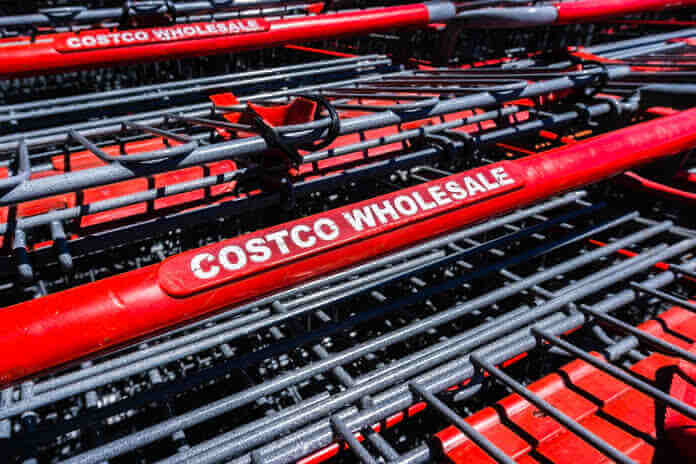Customers of Costco (NASDAQ:COST) appear to be willing to bear the financial burden of paying membership fees to shop at the wholesale retailer.
Costco Earnings Report
The company exceeded expectations in the top and bottom lines of its earnings report for the fourth quarter fiscal quarter. The company reported revenue of $72.09 billion, slightly higher than the estimates provided by Bloomberg of $71.89 billion, and adjusted earnings per share of $4.20, which was higher than the estimates provided by $4.14.
Despite a two percent decline in share price during after-market trading on Thursday, Wall Street analysts remain optimistic about Costco’s potential to maintain its recent upward trend.
Goldman Sachs confirmed its Buy rating and provided investors with an updated 12-month price target of $548. The firm cites that top-line trends remain solid, underpinned by membership gains, as the reason for this.
The note states, “We continue to have confidence in COST’s value proposition resonating with consumers.” At the same time, the scale of the firm and its limited SKU model enable it to manage current inflationary cost pressures.
The investment bank JPMorgan Chase currently has an overweight rating and a price target of $550.00 on the stock. The company is referred to as a “core holding” by the retail analyst working for JPMorgan, Christopher Horvers.
Horvers stated, “We believe Costco (NASDAQ:COST) continues to be a core holding. The unrivaled value proposition of Costco (11% gross margins) to its fiercely loyal customer base (90% renewal rate) and global growth opportunity (2-3% annually and likely double the current store base from here) are a unique combination in retail and consumer staples.”
Shares of the company were last seen trading at $466.40 each after the market closed on Friday, a decrease of -4.26%.
The number of paid household members (65.8 million) and cardholders (118.9 million) at Costco (NASDAQ:COST) increased by 6.5% compared to last year.
Richard Galanti, the CFO and Executive VP of the company stated that a fee increase could happen in the future, but not right now. This is because clients are prepared to pay more, and inflation is affecting the soaring prices of groceries.
Future Plans
Currently, there are no solid plans to raise the prices of the services. We are happy with the rise in both top-line sales and membership households that we have had over the past several quarters, and the increasing member renewal rates are evidence of the devotion of our members. During a call with investors, he sent the following message: “We’ll let you know when something is about to happen.”
The typical interval between membership fees at Costco (NASDAQ:COST) is five years and seven months, which would place the subsequent possible increase around the beginning of 2023. Galanti clarified that he was not implying that it would take place but that the team is “confident” in its capacity to achieve the goal.
“We have full faith in our capacity to achieve this goal, and at some point in the future, we will.” But the question is when not if it will happen.
The annual costs charged by Costco are more than those charged by one of its most direct competitors, Sam’s Club, which is owned by Walmart (WMT) and which increased its pricing in August for the first time since 1999. The yearly membership prices for the competitor will increase to $50, up from $45, beginning on October 17th. Meanwhile, the Plus membership charge will increase to $110, up from $100.
Featured Image: Megapixl @ Andreistanescu















